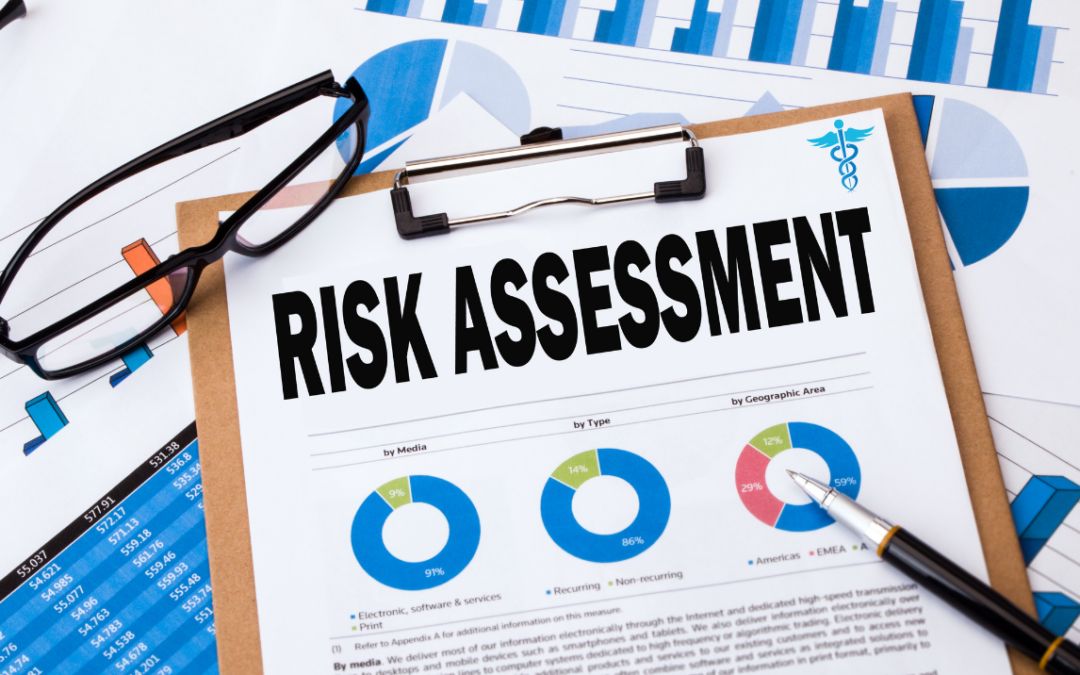Introduction
HIPAA compliance is a must-have for healthcare organizations and any business that handles Protected Health Information (PHI). But staying compliant means more than checking boxes—one essential component is conducting regular, thorough HIPAA Risk Assessments. This guide will dive into why these assessments matter, how they protect both patients and organizations, and the steps required to conduct one effectively.
Why HIPAA Risk Assessments Matter
A HIPAA risk assessment isn’t just an audit exercise; it’s a proactive way to secure sensitive health information and protect the organization from data breaches, hefty fines, and reputational damage. Here’s why it’s essential:
- Identifying Vulnerabilities: A risk assessment uncovers weaknesses in your systems, whether due to outdated software, lack of employee training, or physical security issues, so you can take action before issues arise.
- Mitigating Legal and Financial Risk: Non-compliance can lead to fines from the Department of Health and Human Services (HHS), legal fees, and lost trust among patients and partners. Penalties range from $100 to over $50,000 per violation, depending on severity and intent.
- Building Patient Trust: Protecting PHI isn’t just a compliance requirement; it’s a commitment to patient privacy and security. A robust risk assessment framework shows patients that you value their privacy and take proactive steps to protect it.
- Creating a Culture of Security: Conducting regular risk assessments reinforces a culture of security across the organization. When employees see the emphasis on security, they’re more likely to adopt safe practices, reducing accidental breaches and mistakes.
What Is a HIPAA Risk Assessment?
Under the HIPAA Security Rule, covered entities and their business associates are required to “identify and analyze potential risks to ePHI and implement security measures to reduce these risks.” This involves an organization-wide examination of:
- Physical Security: Access controls, secure storage, and facility safeguards.
- Administrative Safeguards: Policies and procedures around PHI access and employee training.
- Technical Safeguards: Encryption, secure data transmission, and access monitoring.
- Remote Working Considerations: Maintaining HIPAA Compliance
A risk assessment looks at these areas to evaluate potential threats to PHI and assess the effectiveness of existing safeguards.
The HIPAA Risk Assessment Process: A Step-by-Step Guide
Here’s a breakdown of the typical HIPAA risk assessment process, from preparation through to reporting.
1. Define the Scope
- Start by mapping out all systems and locations where PHI is created, accessed, transmitted, or stored.
- Identify both digital and physical assets—like laptops, EMR systems, and cloud storage—as well as administrative controls, such as employee training and access restrictions.
2. Identify Potential Threats and Vulnerabilities
- Think beyond typical “IT” risks and consider physical and administrative risks as well.
- Examples of threats include malicious software, physical theft, accidental exposure by employees, or unauthorized system access.
3. Assess Current Safeguards
- Review all existing policies, access controls, and security technologies. Identify strengths and potential gaps.
- For each area (technical, physical, administrative), consider how well current safeguards align with HIPAA standards.
4. Evaluate Risk Likelihood and Impact
- Calculate the likelihood of each identified risk, categorizing it as low, medium, or high based on the threat landscape.
- Assess the potential impact if the threat were to materialize. For example, would unauthorized access to a certain system expose all patient records?
5. Prioritize Risks and Recommend Controls
- Assign priority levels to risks, with the highest priority given to those with both a high likelihood and significant impact.
- Develop a remediation plan, specifying new safeguards, additional training, or technology upgrades needed to address the highest risks.
6. Document Findings and Plan Next Steps
- Documenting findings is a must to demonstrate compliance. This includes risk factors, current safeguards, vulnerabilities, and action plans.
- Plan future assessments and ongoing monitoring to ensure risks remain managed and compliance standards are maintained.
7. Implement, Monitor, and Update Regularly
- Once your initial assessment is complete, implement the recommended controls and monitor their effectiveness.
- Schedule regular assessments to keep up with changing threats and ensure your organization remains compliant as regulations evolve.
Key Challenges and Solutions in HIPAA Assessments
Conducting a HIPAA risk assessment isn’t without its challenges. Here are a few common issues and strategies to tackle them.
Challenge 1: Navigating Complex Regulations
- Solution: Keep up-to-date with HIPAA requirements by setting alerts for regulatory updates. Consider bringing in a HIPAA consultant or using HIPAA compliance software to streamline the process.
Challenge 2: Balancing Security with Usability
- Solution: Opt for security measures that are user-friendly. For instance, implement multi-factor authentication (MFA) that allows single sign-on, simplifying the process for users without compromising security.
Challenge 3: Maintaining Continuous Compliance
- Solution: Risk assessments are not a “set and forget” task. Establish a regular schedule for follow-up assessments and assign accountability to a compliance officer or team to keep compliance ongoing.
Tools and Resources for HIPAA Assessments
Several tools and resources can support organizations in performing risk assessments:
- Risk Assessment Tools: Free options like the HHS’s Security Risk Assessment (SRA) tool provide a good starting point, but commercial tools often provide more comprehensive features and ongoing support.
- HIPAA Compliance Software: Solutions like Compliancy Group, MedTrainer, and others offer robust platforms for tracking and managing HIPAA compliance efforts.
- Cybersecurity Tools: Tools for vulnerability scanning, monitoring, and endpoint protection are invaluable for safeguarding ePHI and managing risk proactively.
Conclusion: How Formiti Can Simplify Your HIPAA Assessments
HIPAA risk assessments are critical for safeguarding patient data, fostering patient trust, and protecting your organization from costly penalties. A structured and proactive approach to identifying risks and implementing necessary controls is key to maintaining compliance. However, conducting these assessments effectively can be challenging, especially for organizations without dedicated compliance resources or the latest tools.
This is where Formiti’s HIPAA compliance service can make a difference. With our expert-led risk assessment solutions, you’ll get more than just a checklist—we help you identify vulnerabilities, prioritize risks, and implement controls tailored to your organization’s specific needs. Our comprehensive support ensures you stay compliant, keep PHI secure, and build a culture of privacy across your team. Whilst looking after your HIPAA budget
From initial assessments to continuous compliance monitoring, Formiti’s tools and expertise give you peace of mind, knowing your organization meets HIPAA standards today and can adapt to new risks tomorrow. Don’t leave your compliance to chance—partner with Formiti to make HIPAA compliance simpler, stronger, and stress-free.
Ready to get started? Contact us today to learn how Formiti can support your HIPAA compliance journey!

